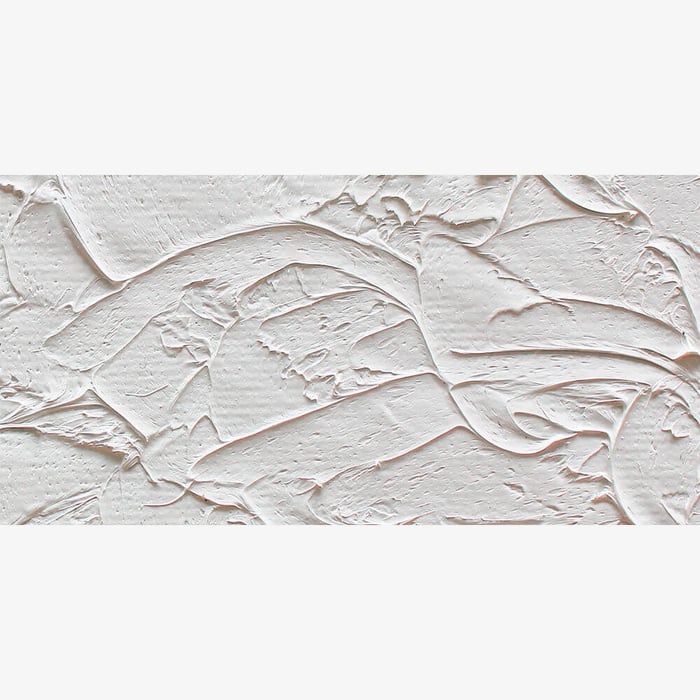
Titanium, Zinc, Tinting, Underpainting, Flake and Cremnitz White
Why are there all these different types of white oil paint?
To begin, its important to understand just exactly what oil paint is, as it will help us understand the differences between different whites.
All oils are made from powdered pigment and a binder, the binder serves to hold the paint in form and seal it to your canvas. Traditionally, the binder in oil paint is linseed oil, or in some whites it’s safflower oil. The higher quality the paint the less additives and driers will be in this mix.
There are numerous types of white oil paint, each are sourced from different pigments, and each perform differently. Unfortunately, there is no perfect white for all artists - each white has its own benefits and trade-offs. In this blog, we will run you through the different types of white and how they may serve you and your art practice.
Titanium White
Titanium white is almost an essential in every artist’s paint box. Titanium white is a non-toxic, neutral white, with a moderate drying time, and with the greatest opacity of any white. It’s the perfect white for alla prima painting or landscape painting, with a middle texture that works well under the palette knife or brush. It breaks cleanly off the brush or knife, leaving a great impasto stroke if that’s what the artist desires. Alternatively, it can be applied flat and level in glazes or thin applications.
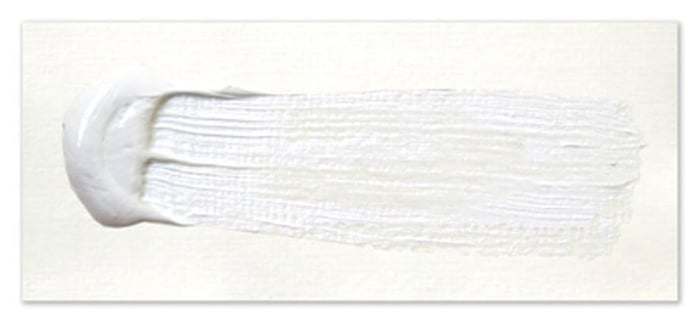
Zinc White
Zinc white has the coolest temperature and is the stiffest of whites. Its main claim to fame is that it is the only transparent white pigment, making it subtler and softer for your colour mixes. It yields pastel colours and removes the chalky quality you would usually get working with with titanium white. Zinc white is the slowest drying of the whites and remains workable for longer.
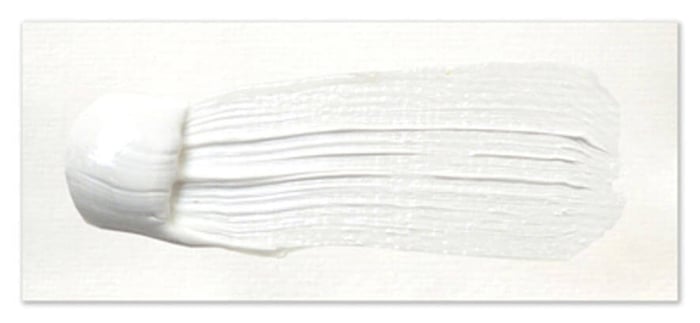
Zinc white stands out from most other whites in its characteristics and affordability. However, Zinc white is made with zinc oxide. In a paint, zinc oxide becomes thick and stiff (like cold butter) and can be challenging to work with. It also tends to be brittle and should not be used as your only white. Zinc White’s brittleness and inflexibility can make it prone to cracking, usually occurring when the concentration of Zinc in your mixes is too great. For this reason, its best used with glazing or scumbling. So, Zinc is a white you’ll have a lot of fun playing around with, but you must only use it sparingly.
Tinting White or Titanium/Zinc mix
These whites are simply a mix of both titanium and zinc, taking a bit of the opacity out of the standard titanium pigment and creating a more agreeable all-rounder kind of white. It’s preferable for some artists for its improved physical working characteristics.
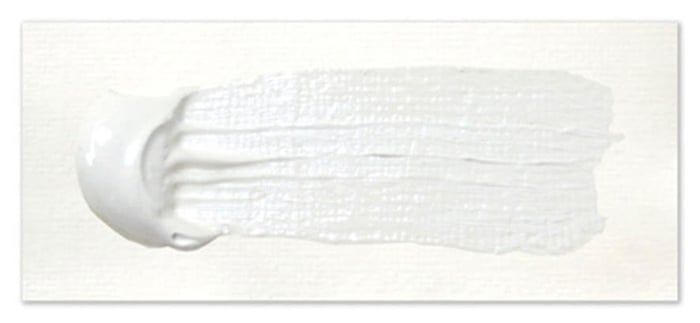
Underpainting White
An underpainting white is often a mix of titanium and zinc white pigment. However, it can also just be titanium, depending on the brand. Underpainting white contains an alkyd drier which allows it to dry faster. As the name suggests, it is great choice for your initial layers of a painting and will remain quite stable in large quantities.

Cremnitz White
Cremnitz white is a lead based white. Many brands steer clear of making lead-based paint due to the toxicity and government health safety standards. If you do use a lead based white it is recommended that you ALWAYS use gloves, wash your hands thoroughly and avoid touching your face or mouth.
With that, you may wonder why artists still use such a toxic paint, and it’s not without good reason. Lead-based whites have unique characteristics, they are stringy in consistency, transparent and have low tinting strength. They dry quickly and have a strong flexible film, which makes it less likely to crack. They are very popular among portrait artists because the artist can create mixes with a wonderful translucent quality which mimics human skin without the drawbacks of using only a zinc white.
However, as a beginner or even an intermediate artist, I wouldn’t recommend opting for a lead based white, purely for their toxicity and that the subtle qualities of working with this paint may be lost on you without decades of experience.
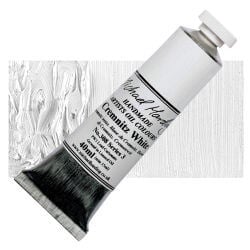
Flake White
Flake White is another lead-based white paint, so the benefits and drawbacks to this white are the same as the Cremnitz White. However, Flake White is mixed with zinc oxide, which removes the stringy quality of the lead and gives it greater resistance under a palette knife or brush due zinc’s additional stiffness and density.
Which one do I choose?
Ultimately there is no ‘one size fits all’ for which white you choose to work with and its unlikely that there will be a single white that will see you through your entire painting career. However, it has been known for artists to eventually find a single white that works well for them and their practice and then use that specific one indefinitely. It is still advised, as with all painting endeavours, to continue to experiment and try new materials and techniques. This will always help you grow and better understand your art practice and the world of oil painting itself. It can be a lot of information to take in at a single time, so we recommend you take what information you can and use what you understand bit by bit. As your practice grows there will be room for you to experiment. Start your painting career with a titanium white or titanium/zinc mix and when you’re ready to try a new white, resources like this will still be readily available for you.




